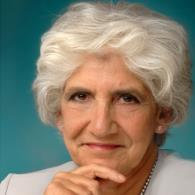Women in Brain Science: Achievements, Challenges and Perspectives
A special issue of Brain Sciences (ISSN 2076-3425).
Deadline for manuscript submissions: closed (15 September 2023) | Viewed by 17264
Special Issue Editors
Interests: disorders of sleep; narcolepsy; idiopathic hypersomnia; parasomnias; circadian sleep disorders; movement disorders in sleep
Special Issues, Collections and Topics in MDPI journals
Interests: sleep-related movement disorders, especially RLS; gender differences in sleep pathology; epilepsy and parasomnias and sleep dysfunction associated with neurological disorders
Interests: sleep medicine; sleep education; polysomnography; BME; neurophysiology; headache
Interests: brain injury; consciousness; coma; vegetative state; unresponsive wakefulness syndrome; minimally conscious state; post-traumatic confusional state; locked-in syndrome
Special Issues, Collections and Topics in MDPI journals
Special Issue Information
Dear Colleagues,
To celebrate and highlight the achievements of women in the research area of brain science, it is our pleasure to present this special collection of articles, highlighting the achievements of women scientists in the field of brain science from all around the world. We also hope that this Special Issue will further encourage and promote the scientific contributions of female researchers in this field.
We cordially invite researchers to submit their work on topics across all areas of brain science. Review articles, original research papers, and communications are all welcome.
Articles for which women are lead or senior authors are encouraged. We welcome submissions from all authors, irrespective of gender.
Prof. Dr. Soňa Nevšímalová
Prof. Dr. Rosalia Silvestri
Prof. Dr. Teresa Paiva
Dr. Caroline Schnakers
Guest Editors
Manuscript Submission Information
Manuscripts should be submitted online at www.mdpi.com by registering and logging in to this website. Once you are registered, click here to go to the submission form. Manuscripts can be submitted until the deadline. All submissions that pass pre-check are peer-reviewed. Accepted papers will be published continuously in the journal (as soon as accepted) and will be listed together on the special issue website. Research articles, review articles as well as short communications are invited. For planned papers, a title and short abstract (about 100 words) can be sent to the Editorial Office for announcement on this website.
Submitted manuscripts should not have been published previously, nor be under consideration for publication elsewhere (except conference proceedings papers). All manuscripts are thoroughly refereed through a single-blind peer-review process. A guide for authors and other relevant information for submission of manuscripts is available on the Instructions for Authors page. Brain Sciences is an international peer-reviewed open access monthly journal published by MDPI.
Please visit the Instructions for Authors page before submitting a manuscript. The Article Processing Charge (APC) for publication in this open access journal is 2200 CHF (Swiss Francs). Submitted papers should be well formatted and use good English. Authors may use MDPI's English editing service prior to publication or during author revisions.









